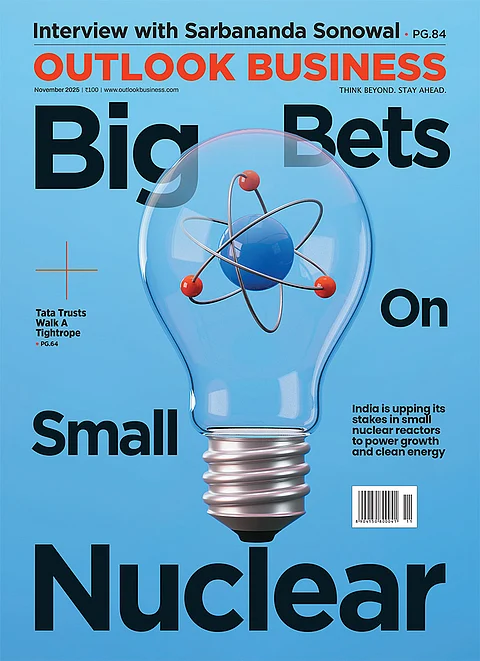
US tariffs doubled to 50% on Indian exports, excluding pharma, electronics.
Textiles, gems, jewellery, leather, and seafood face severe trade impact.
Exporters warn of massive job losses across India’s labour-intensive sectors.
Analysts predict GDP may shrink 0.4–0.5% if tariffs persist.
US President Donald Trump’s 50% tariff has now become effective on Indian imports with its direct blow landing on the country’s biggest export market, with consequences for jobs, growth and industries that rely on American demand. The US order links the penalty to India’s continued imports of Russian crude and defence hardware.
According to Washington, India’s oil and defence trade with Russia is a “threat to the national security and foreign policy of the United States.” Trump has also threatened additional tariffs on countries with digital taxes.
The US Department of Homeland Security stated that all Indian goods “entered for consumption, or withdrawn from warehouse for consumption, on or after 12:01 am EDT on August 27, 2025” (9:31 am IST) will face the new 50% tariff.” This means every shipment landing after that deadline will face a doubled rate.
Before this, Indian exports to the US faced a 25% duty. The new tariff has the biggest hit on labour-intensive sectors but pharmaceuticals, electronics and petroleum products are spared for now. Aluminium, steel or iron and copper will continue to face the previous 25% duty but are exempt from the additional 25%.
How the Tariffs will Impact Sectors
Textiles and Apparel
The biggest hit sector amid the tariff rains is the country’s textile sector. India is the sixth-largest exporter of textiles and apparel globally, which accounts for roughly 4–4.1% of world exports in 2024, according to PIB estimates. In 2024-25, the sector, including handicrafts, contributed $37.7 billion (8.63%) to India’s merchandise exports. The overall industry, including domestic consumption, is valued at $179 billion ($142B domestic, $37.7B exports).
Around 29% of Indian textile and apparel exports, which is roughly $10.3 billion, is absorbed by the US. Other major markets include the European Union and the UK. Analysts warn that the new 50% US tariffs could price Indian exports out of the market.
Speaking to Economic Times, Mithileshwar Thakur, Secretary General of the Apparel Export Promotion Council (AEPC) said that the sector now faces a 30–31% cost disadvantage relative to competitors such as Bangladesh, Vietnam, Sri Lanka and Cambodia. As per BBC analysis, under a 50% tariff, a $10 Indian-made shirt would cost $16.40 in the US, compared with $13.20 from Bangladesh, $12 from Vietnam, and $14.20 from China.
According to Ajay Srivastava, founder, Global Trade Research Initiative (GTRI), “We can expect a diversion of trade, with US buyers moving to Mexico, Vietnam and Bangladesh.” For a sector operating on thin margins, this disruption could severely affect employment and production in key export hubs.
Gems, Jewellery and Diamonds
In FY24, India exported $10 billion in gems and jewellery to the US, according to the Ministry of Commerce & Industry. The US remains the largest market for this industry, accounting for nearly a third of the sector’s $28.5 billion annual shipments. With US tariffs rising from 25% to 50%, exporters are bracing for significant disruption.
Kirit Bhansali, chairman of the Gem & Jewellery Export Promotion Council (GJEPC), said that the new duties are a “doomsday” for the industry. Srivastava has also warned that up to 150,000–200,000 jobs could be at risk if a trade deal is not struck .
In Surat, where more than 80% of the world’s rough diamonds are cut and polished, orders are already declining. Reuters reported. As per Shailesh Mangukiya, a unit owner, “Demand has slumped so badly that diamond packets I sold for Rs 25,000 ($286) last year now barely fetch Rs 18,000.” In conversation with Reuters, Hitesh Patel, managing director of Dharmanandan Diamonds, said that US tariffs could reduce his annual revenue by 20–25%, prompting plans to increase production in Botswana.
Seafood
India’s seafood worth Rs 60,000 crore ($7.4 billion) is exported to the US annually, with shrimp making up roughly 40% of the total. It is reported that the new 50% tariff could wipe out Rs 24,000 crore in exports. According to Pawan Kumar, head of the Seafood Exporters Association of India, “We are shocked. Orders from US clients have been paused in recent weeks as buyers aren’t willing to absorb the tariff, and neither can exporters, forcing price cuts for farmers.” The country’s largest shrimp-exporting state, Andhra Pradesh could also see hundreds of thousands of farmers impacted.
Leather and Footwear
Valued at $4.1 billion in exports, India’s leather industry faces severe disruption. As per an Economic Times report, the US accounts for $870 million (around 20%) of these exports. Kolkata, a key hub, could see production halts, with significant implications for employment. The footwear segment is especially vulnerable: a $100 pair could see nearly $50 added in US duties, making Vietnamese and Indonesian products far more affordable for buyers.
Kanishk Maheshwari, co-founder and managing director of Primus Partners India pointed out that India’s 1% share in the $100-billion US leather import market is about to shrink further. Speaking to ET, Arjun Mukund Kulkarni, president of the Indian Leather Products Association (ILPA) said, “The industry is in a wait-and-watch mode. We are unable to offer any discounts to buyers either.” Exporters are exploring partial production in Europe and other workarounds.
How Big Will the Tariff Shock Be?
The Global Trade Research Initiative says that India ships about $86.5 billion worth of goods to the US each year. Of this, roughly $60.2 billion (66%) will now face the 50% tariff. On the other hand, the other $3.4 billion in auto parts remains at 25%, while $27.6 billion, mostly pharma, electronics and petroleum, stays duty-free.
Srivastava estimated that exports from affected sectors could plunge 70%, collapsing from $60.2 billion to $18.6 billion. Overall shipments to the US could fall 43%, threatening hundreds of thousands of jobs across India’s export hubs.




























